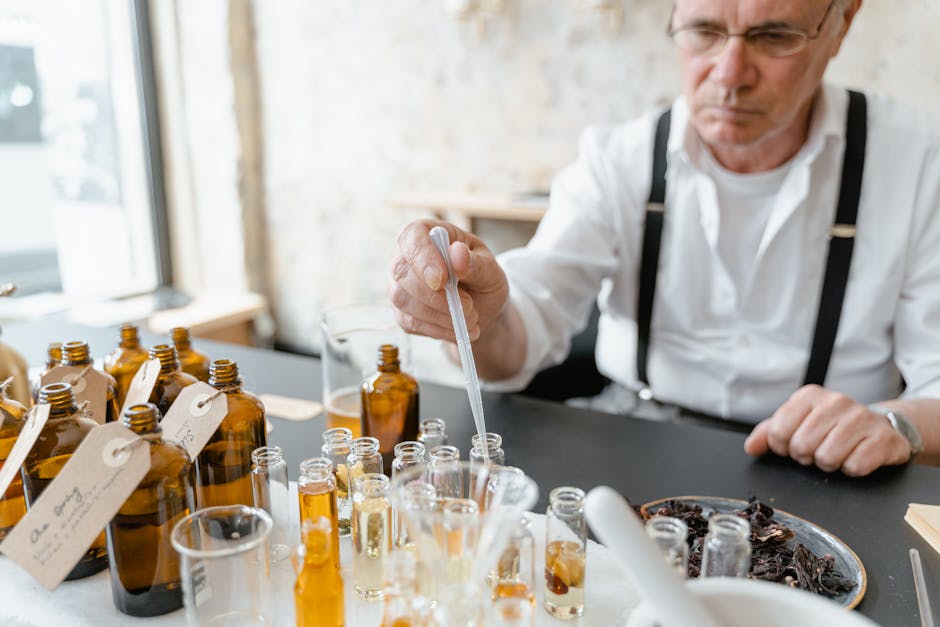Unlocking the Limbic Lock: Scent, Emotion, and the Neural Symphony
The amygdala and hippocampus, those deep-seated architects of emotion and memory, receive olfactory information via a privileged pathway. Unlike sensory inputs subjected to thalamic pre-processing, olfactory signals circumvent this relay station, forging a direct connection to the emotional core. This intimate neural liaison explains the profound impact of aroma; a single inhalation can instantaneously conjure a vivid recollection or unleash a torrent of feeling, often bypassing conscious deliberation. Picture this: a familiar perfume, a momentary inhalation transporting you to childhood, triggering a breathtaking cascade of emotions interwoven with that specific memory. This is the olfactory-emotional nexus, a remarkable interplay of scent and sentience.
Pure, unadulterated essential oils – bereft of synthetic contaminants – are repositories of potent, volatile aromatic compounds. Upon inhalation, these molecules engage with olfactory receptors, activating that direct conduit to the limbic system. The subtlety is paramount. In stark contrast to the bombastic assault of artificial fragrances, pure essential oils engage in a nuanced dialogue, enabling a more precise and finely calibrated influence on emotional equilibrium. It's akin to employing a masterfully crafted violin versus a blunt instrument.
Consider this analogy: synthetic fragrances are like a cacophony of static-ridden radio broadcasts, overwhelming the neural circuitry. Conversely, pure essential oils resonate like exquisitely tuned radio waves, precisely targeting specific emotional "frequencies" within the limbic orchestra. Lavender, for instance, might gently modulate calming neural oscillations, while peppermint could stimulate more energetically active regions, depending on the individual's unique neurochemical profile. The variation is as profound as the individual.
Moreover, the intrinsic chemical composition of each essential oil bestows its distinctive therapeutic properties. The intricate molecular tapestry of chamomile, for example, is vastly different from that of rosemary, yielding markedly disparate effects on mood, concentration, and even sleep architecture. Emerging research strongly advocates for moving beyond vague pronouncements of "aromatherapy benefits" and instead investigating the precise neurochemical mechanisms driving each oil's unique action. Our imperative is to understand not only what an oil achieves, but also how its effects materialize at the molecular and neurological levels.
The Subconscious Navigator: Essential Oils and Memory Reawakening
The hippocampus, a pivotal player in memory encoding and retrieval, also receives direct olfactory input,. This inherent connection between scent and remembrance illuminates aromatherapy's potential as a powerful intervention in memory-related conditions. Associating a specific scent with a given experience can significantly enhance memory recall, rendering memories more vibrant and readily accessible. This is not merely about linking pleasant aromas to positive experiences, but rather about harnessing the olfactory system's ability to access profoundly buried, often unconscious, memories.
Envision the human brain as an extensive, intricately connected neuronal network—a sprawling metropolis. Memories are individual buildings within this urban landscape, interconnected by intricate pathways. The olfactory system functions as a sophisticated guidance system, capable of directing consciousness to specific locations, retrieving particular memories with remarkable precision. The appropriate essential oil, serving as a precise address, can guide attention to those memory "edifices" nestled within the subconscious, potentially resolving emotional impediments or retrieving forgotten insights.
This opens up a realm of possibilities for therapeutic applications, especially within trauma-informed care. Pairing specific scents with therapeutic interventions can amplify and prolong their effects by facilitating the integration of traumatic memories and their associated emotional burdens. It's about gently guiding the subconscious toward healing through the subtle language of scent, offering a gentler approach than traditional verbal therapies.
The Imperative of Purity: Unveiling the Therapeutic Potential of Essential Oils
A deluge of synthetic aromachemicals and deceptively labeled "therapeutic-grade" dilutions saturates the marketplace. However, the utilization of 100% pure essential oils stands as a cornerstone for maximizing their inherent therapeutic efficacy. This purity ensures engagement with the intricate biochemical tapestry nature intended, circumventing potential dermal irritations or unpredictable synergistic reactions often associated with diluted or artificial concoctions. Consider this analogy: one wouldn't anticipate complete therapeutic efficacy from a weakened medication; the same principle governs the application of essential oils.
The unique phytochemical orchestra within each oil dictates its therapeutic properties, a fact often overlooked. Diluted or adulterated oils are akin to a culinary catastrophe – substituting key ingredients in a soufflé recipe; the result might superficially resemble the intended dish, but it will utterly lack its desired gustatory and textural characteristics. Conversely, synthetic fragrances, bereft of this nuanced complexity, frequently elicit adverse reactions in individuals with heightened sensitivities. Their simplistic composition pales in comparison to nature's sophisticated formulations.
Thus, procuring certified pure essential oils from reputable vendors becomes paramount. Scrutinize labels for the precise botanical nomenclature (Latin binomial), extraction methodology, and geographic origin— hallmarks of verifiable provenance and transparency. Eschew oils making unsubstantiated therapeutic claims devoid of robust scientific validation. Further research on essential oil purity and safety is available from organizations like the National Association for Holistic Aromatherapy (NAHA).
Orchestrating the Olfactory Symphony: Advanced Applications
Beyond the ubiquitous diffusion method, more refined strategies exist to harness the therapeutic power of essential oils. Explore these targeted approaches:
-
Personalized Aromatic Compositions: Collaborate with a qualified aromatherapist to craft personalized blends precisely attuned to your unique physiological and emotional landscape. A skilled practitioner can guide you through oil selection, aligning choices with your individual emotional constitution and health objectives.
-
Mindful Inhalation Practices: Elevate beyond passive diffusion; instead, employ focused inhalation directly from the bottle or a specialized inhaler for a more concentrated and precisely controlled delivery of aromatic compounds.
-
Topical Application (with Cautious Dilution): Certain oils lend themselves to topical application, but always dilute them judiciously with a carrier oil – such as jojoba or fractionated coconut oil – to mitigate the risk of cutaneous irritation. A preliminary patch test is non-negotiable before widespread application. Remember to consider the benefits of using a good quality carrier oil for essential oils for topical application.
-
Synergistic Mindfulness: Augment the therapeutic impact by integrating essential oil use with contemplative practices, such as meditation or controlled respiratory exercises. Consciously focusing your attention on the inhaled aroma can amplify its therapeutic resonance. Before you begin, make sure you've chosen a high-quality diffuser. Be sure to check out our guide on Diffuser Deception: Unmasking the 2025 Best Essential Oil Diffusers (And the Marketing Myths) to help you make an informed choice.
By adopting a proactive and informed perspective on the use of 100% pure essential oils, you can unlock their profound potential to modulate mood, enhance memory retention, and cultivate a holistic sense of well-being. Through the subtle artistry of scent, you connect with the potent language of your subconscious, influencing the intricate dance of mind and body.



